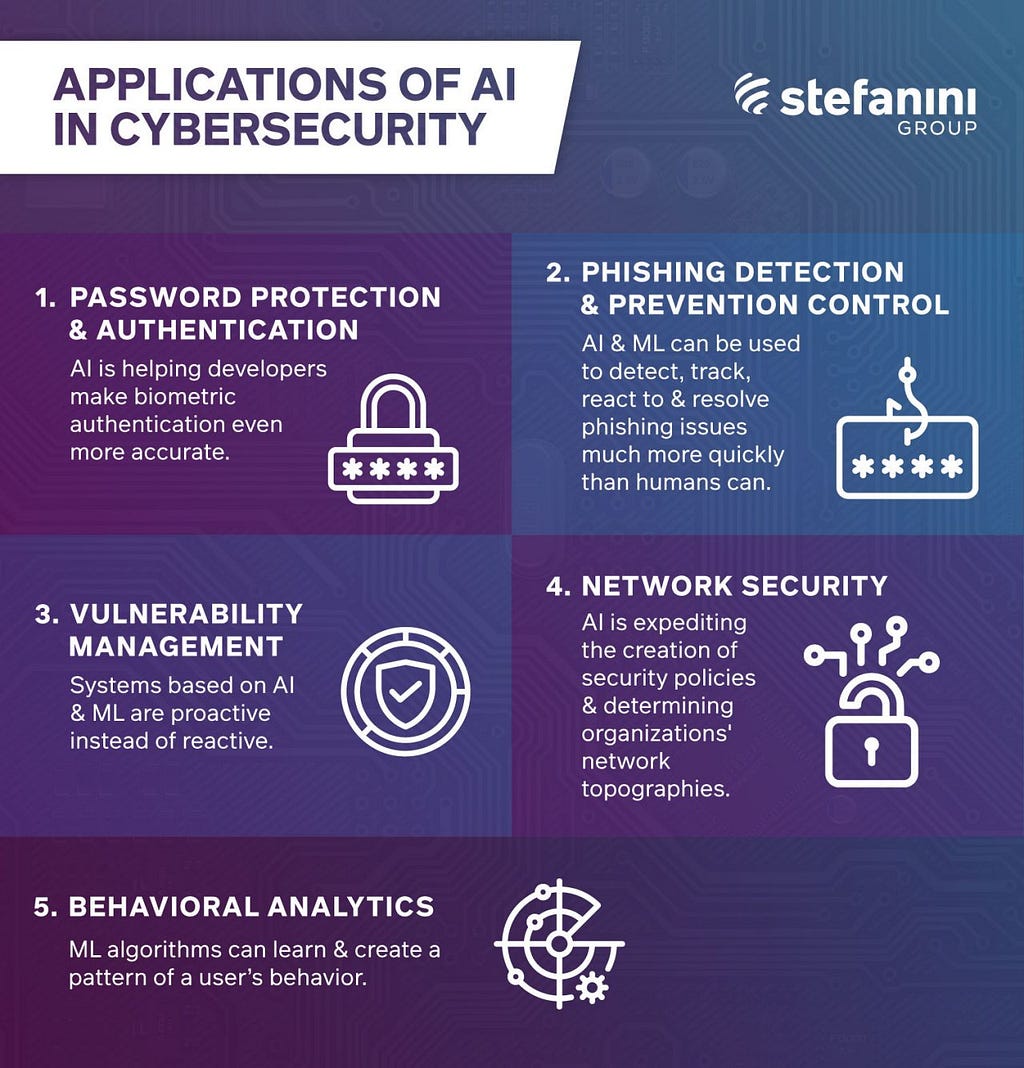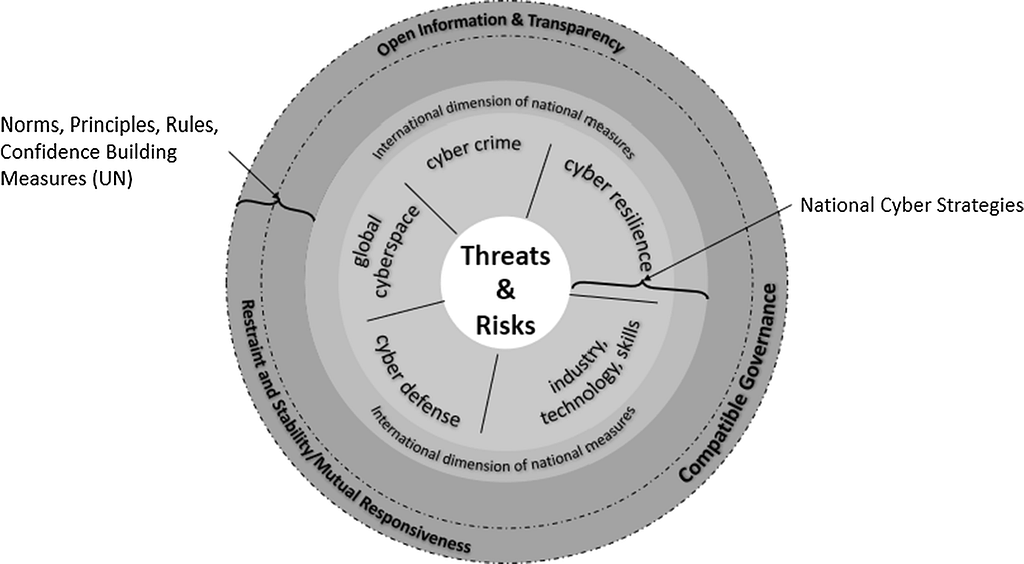
An Assessment of Artificial Intelligence in the Cybersecurity Sector
Last Updated on July 3, 2022 by Editorial Team
Author(s): Harshit Poddar
Originally published on Towards AI the World’s Leading AI and Technology News and Media Company. If you are building an AI-related product or service, we invite you to consider becoming an AI sponsor. At Towards AI, we help scale AI and technology startups. Let us help you unleash your technology to the masses.
Introduction
There have been recent efforts to use artificial intelligence (AI) technology in a variety of cyber security applications. the use of AI in identifying aberrant traffic, network condition awareness, monitoring harmful activity, and user access authentication. Artificial intelligence and cyber security overlap in a variety of transdisciplinary areas (AI). On the one hand, deep learning and other AI technologies may be used in cyber security to build intelligent models for implementing malware categorization, intrusion detection, and threat intelligence sensing. The different cyber risks that AI models may encounter, on the other hand, will interfere with their decision-making, learning, and sample.

The development of artificial intelligence (AI), which has attracted a lot of attention from academics and practitioners, has opened up a wide variety of attractive choices for its application in the public sector. As a result, there is an increasing demand for an in-depth understanding of the range and impact of AI-based applications as well as the challenges associated with them. Previous research, however, focused only on a select few AI applications and issues. Because there isn’t a full overview of AI-based applications and difficulties for the public sector, our conceptual approach evaluates and aggregates significant concepts from the scientific literature to give an integrated picture of AI applications and related concerns.

Artificial intelligence’s place in cybersecurity
We now have access to a broad range of options, but we are also more vulnerable to many risks thanks to the digital age, including those that might jeopardize our personal data. The need for cybersecurity now is greater than it has ever been. Over the past 10 years, there has been a surge in identity theft, financial loss, and data breaches due to hackers’ ability to reach their targets at any time and from anywhere in the world. When combined with machine learning, AI is playing an increasingly significant role in cybersecurity. According to ZDNet, new security solutions are using big data from millions of online activities to analyze and identify dangers including phishing scams and novel malware strains.

The three main steps in programming AI are as follows:
- Reasoning: — For each required action, this method focuses on choosing the best algorithm.
- Learning: — Gathering data and formulating rules to translate knowledge into actions that programs may do are required at this level.
- Self-correction —This component’s main goal is to organically improve performance by optimizing algorithms.
Applications of AI in the cybersphere provide considerable advantages to business and government leaders responsible for protecting people, systems, organizations, and communities from today’s relentless cyber attackers. Throughout the whole cyber lifecycle, AI performs a variety of useful tasks, including as monitoring vast swathes of data to detect sneaky hostile assaults, calculating the risks associated with well-known vulnerabilities, and supplying data-driven decision-making during threat hunts. For seasoned cyber experts, these qualities serve as a force multiplier.

A person may not be able to identify all of the risks that a company faces. Hackers initiate 100 million assaults annually for a variety of reasons. Unknown attacks have the potential to do great harm to a network. Even worse is the potential harm they might cause if you don’t identify them in time to stop them. Adopting modern solutions is crucial to thwarting attackers as they experiment with novel tactics, such as malware assaults and sophisticated social engineering. AI has shown to be one of the best security tools for seeing and stopping unforeseen dangers from harming an organization.
The secret to protecting a company’s network is vulnerability management. A typical organization, as was already indicated, faces several dangers every day. To be safe, it must be able to find, recognize, and stop them. AI research can assist in managing vulnerabilities by analyzing and evaluating the current security solutions. Your capacity to solve problems grows significantly as a result of AI’s ability to examine systems more quickly than cybersecurity experts. It helps organizations concentrate on crucial security duties by identifying weak spots in computer systems and company networks. As a result, it is feasible to manage vulnerabilities and quickly safeguard corporate systems.
Artificial intelligence in Cybersecurity: Problems and Challenges
The biggest challenge AI faces is how expensive it is to install. Since most of AI is still in its experimental and infancy stages of development, its cost could be prohibitive for many enterprises. This will make it much easier for hackers to launch swifter, more complex attacks. Criminals can utilize machine learning to identify the reasons why some cyberattacks have failed and create more potent and successful attack models, similar to network monitoring and observing user behavior patterns. Malware that mimics reputable software may likewise be produced using AI. It may be used to carry out risky assaults without ever being discovered and discover more about the patterns of the target network.

Because AI is still mostly experimental and in its infancy, its cost may be prohibitive for many firms. As a result, hackers will find it much easy to carry out speedier, more advanced attacks. Criminals can use machine learning to understand why certain cyberattacks have failed and create more successful ones by researching user behavior patterns and network monitoring.
The biggest problem AI faces is the expense of installation. Because AI is still mostly experimental and in its infancy, its cost may be prohibitive for many firms. As a result, hackers will find it much easy to carry out speedier, more advanced attacks. The biggest problem AI faces is the expense of installation.
It incorporates many different academic fields, including computer science, engineering, chemistry, biology, physics, astronomy, neuroscience, and social sciences. AI aids SOC teams in the creation of intelligent workflows, the connection and correlation of data from many systems, the streamlining of their operations, and the generation of actionable insights. Consistent, precise, and well-organized data are essential for effective AI. The procedures developed using AI then produce better-quality data required to retrain the models. As they complement and assist one another, SOC teams and AI in cybersecurity evolve and advance together. The capability of AI technology to be integrated with existing technologies is a significant characteristic. Numerous fields have benefited from AI, including chemistry and medicine, where routine diagnoses are now started by AI-assisted computers.
Conclusion
The definition of artificial intelligence was covered in this blog. And what part does AI play in the cybersecurity industry? Furthermore, what problems and difficulties do artificial intelligence-based cybersecurity systems face? Still, the author feels that this area needs further research and development to get better.
Till then bye to all readers.

References
- https://link.springer.com/article/10.1631/FITEE.1800573
- https://www.tandfonline.com/doi/abs/10.1080/01900692.2018.1498103
- https://link.springer.com/article/10.1007/s11023-019-09508-4
- https://link.springer.com/article/10.1007/s11023-019-09504-8
An Assessment of Artificial Intelligence in the Cybersecurity Sector was originally published in Towards AI on Medium, where people are continuing the conversation by highlighting and responding to this story.
Join thousands of data leaders on the AI newsletter. It’s free, we don’t spam, and we never share your email address. Keep up to date with the latest work in AI. From research to projects and ideas. If you are building an AI startup, an AI-related product, or a service, we invite you to consider becoming a sponsor.
Published via Towards AI
Take our 90+ lesson From Beginner to Advanced LLM Developer Certification: From choosing a project to deploying a working product this is the most comprehensive and practical LLM course out there!
Towards AI has published Building LLMs for Production—our 470+ page guide to mastering LLMs with practical projects and expert insights!

Discover Your Dream AI Career at Towards AI Jobs
Towards AI has built a jobs board tailored specifically to Machine Learning and Data Science Jobs and Skills. Our software searches for live AI jobs each hour, labels and categorises them and makes them easily searchable. Explore over 40,000 live jobs today with Towards AI Jobs!
Note: Content contains the views of the contributing authors and not Towards AI.














